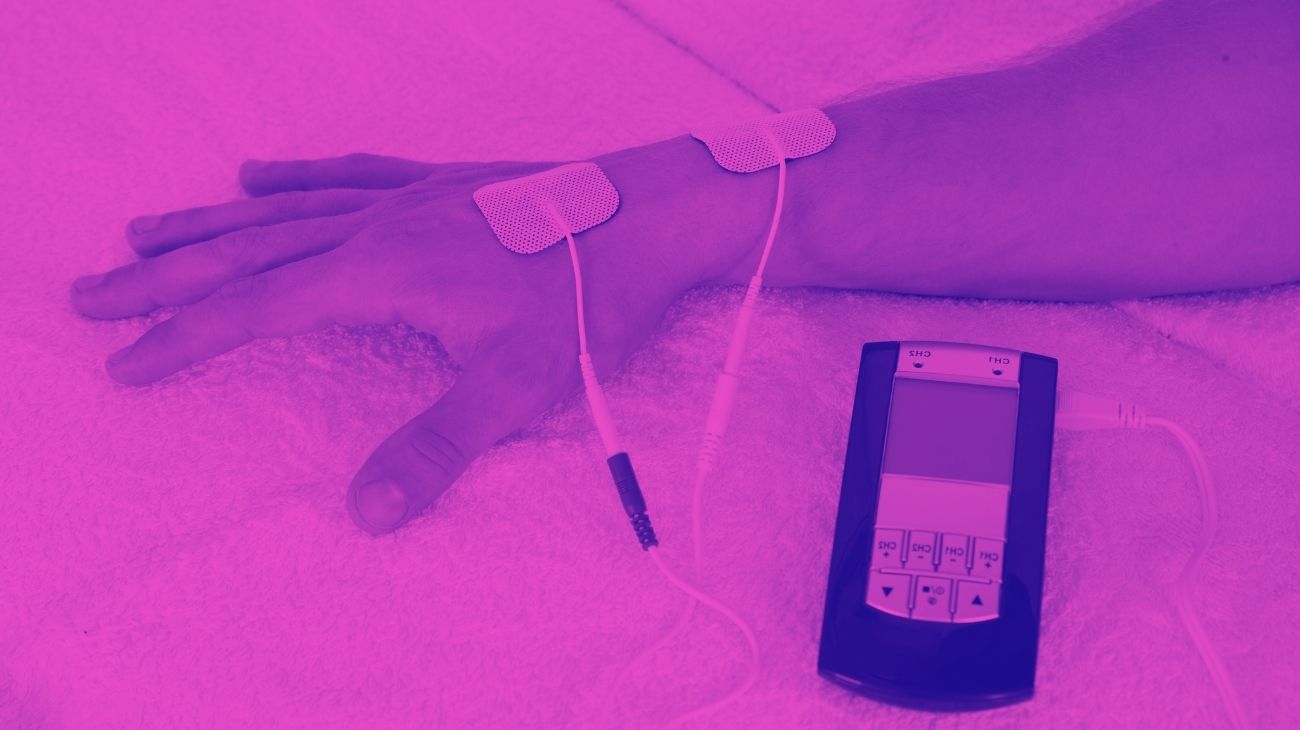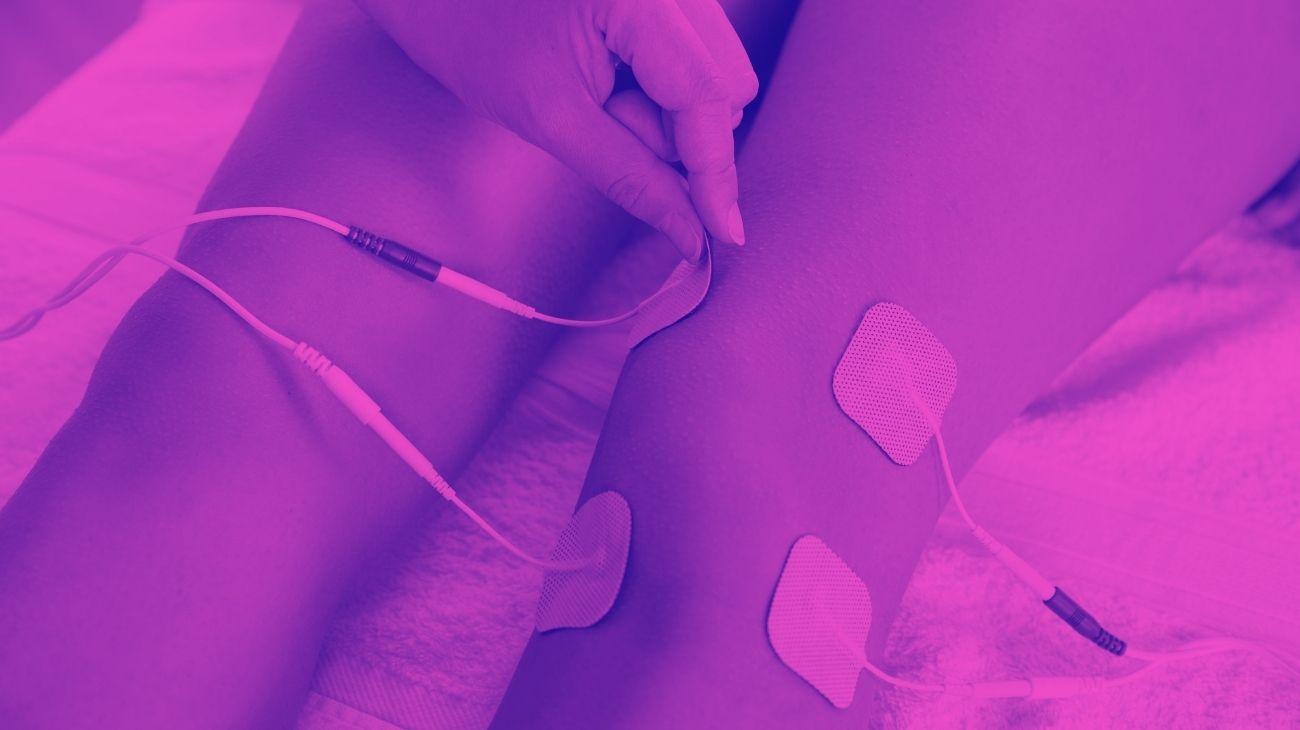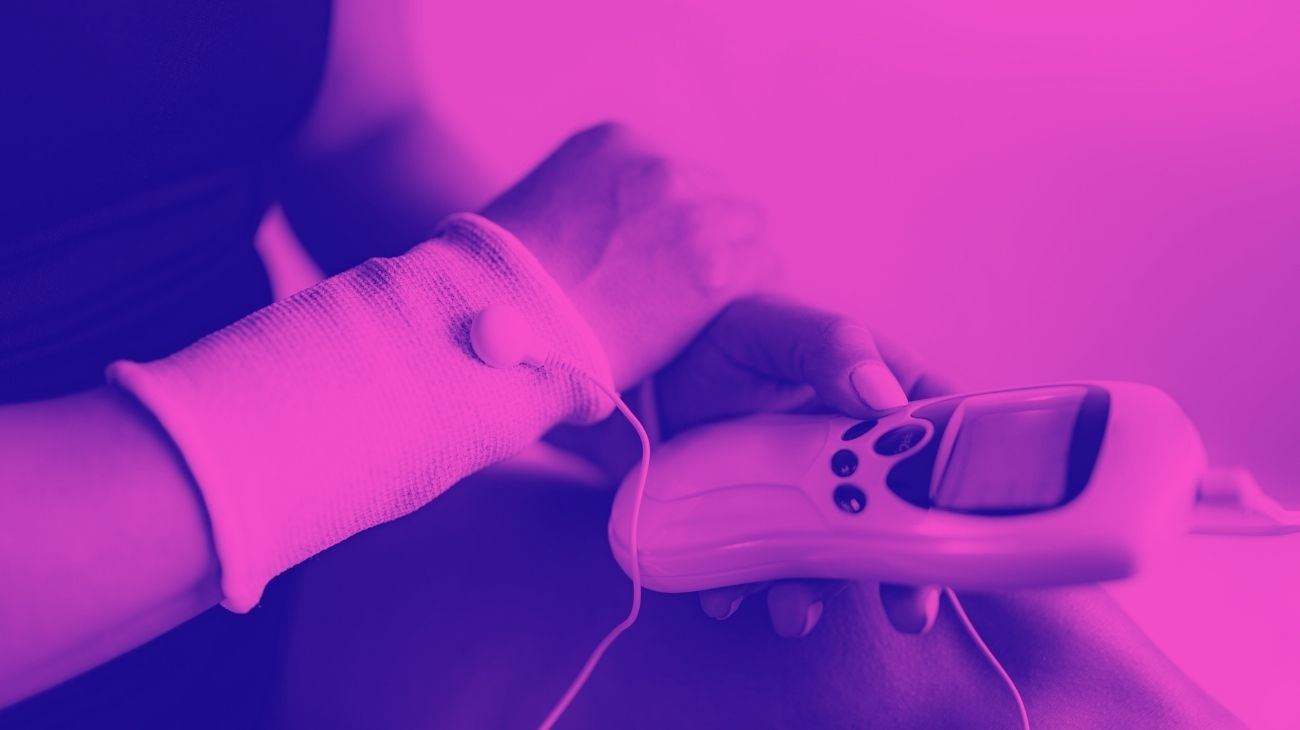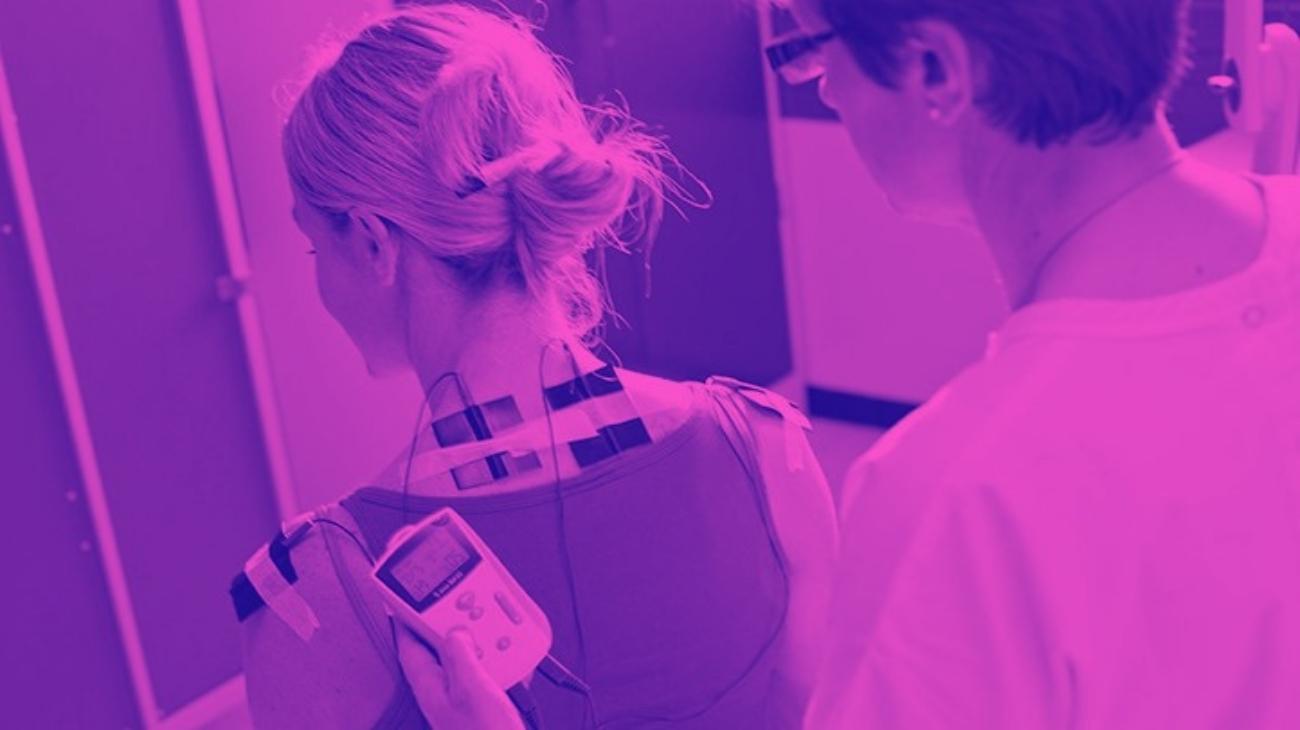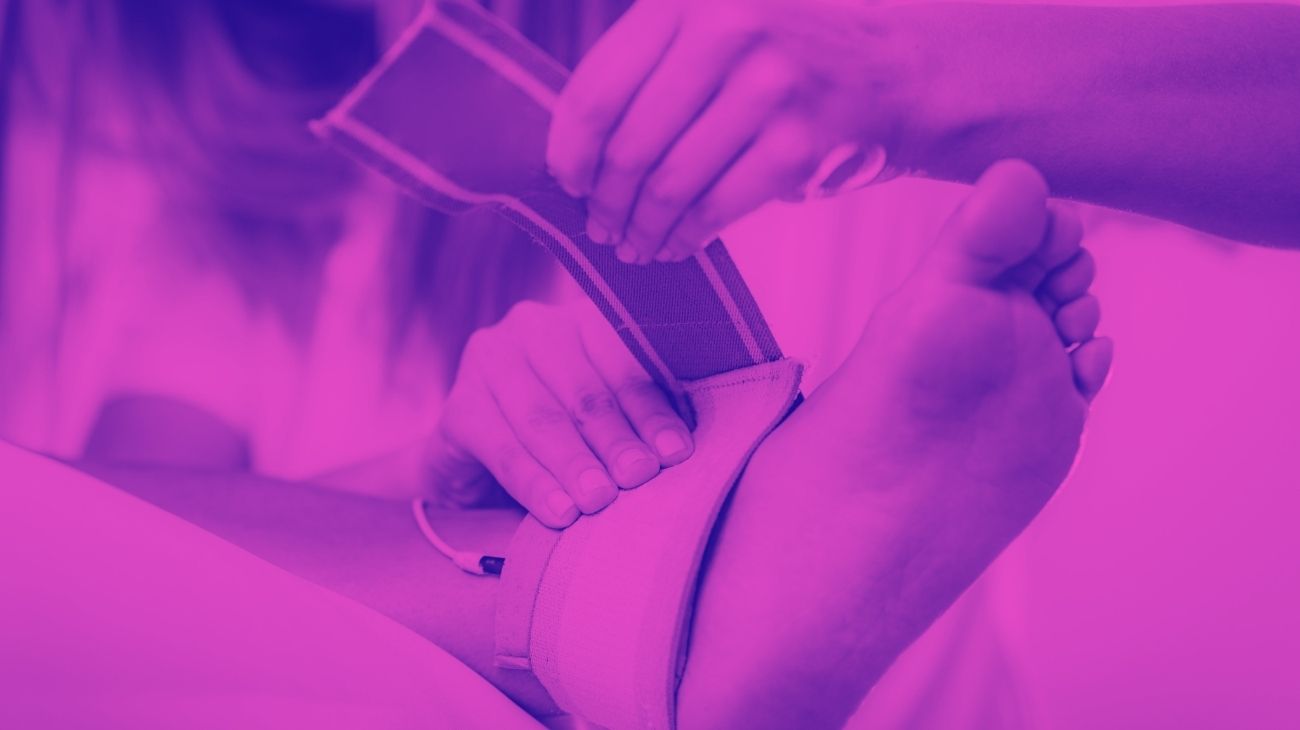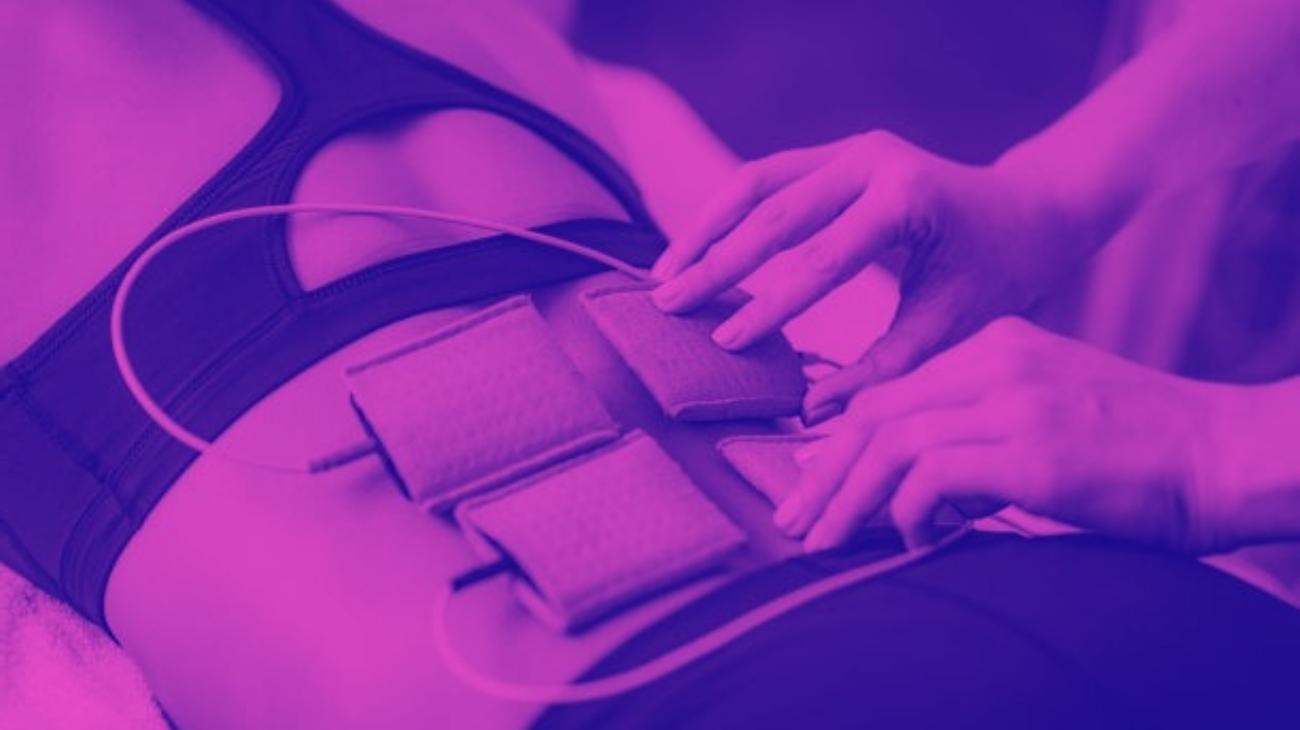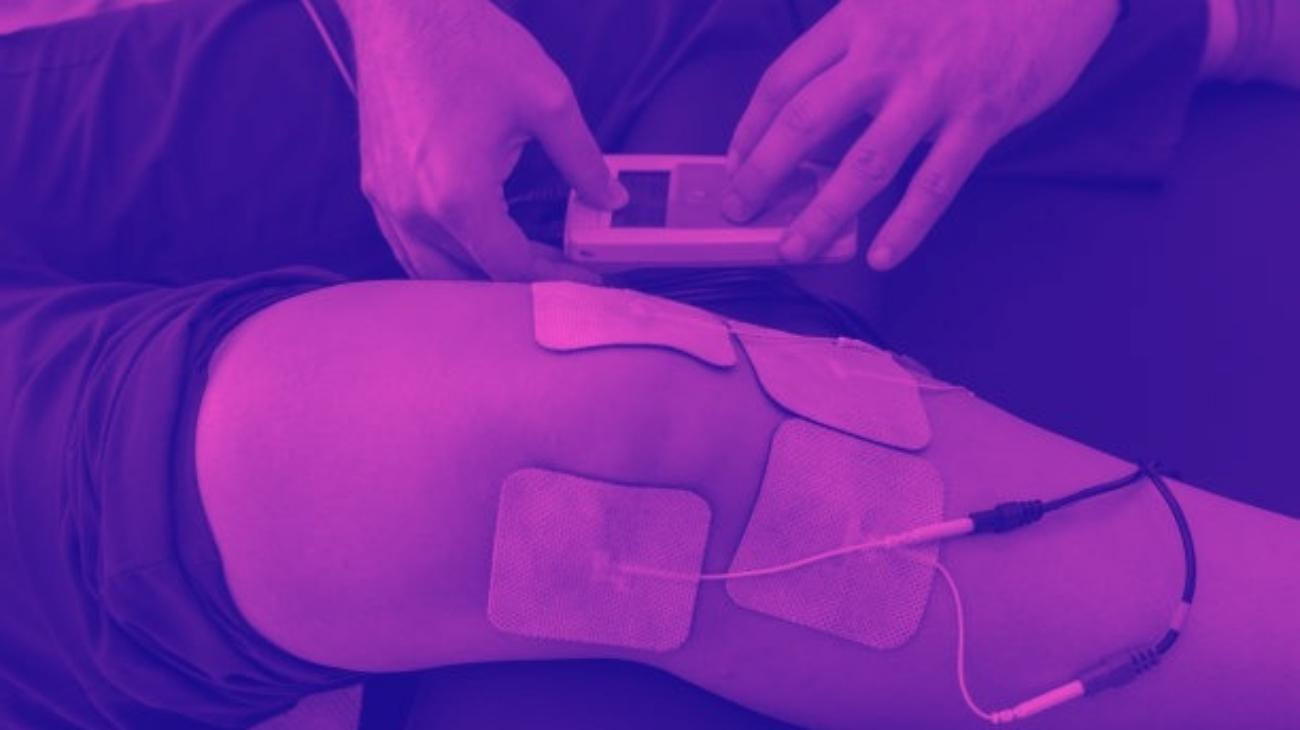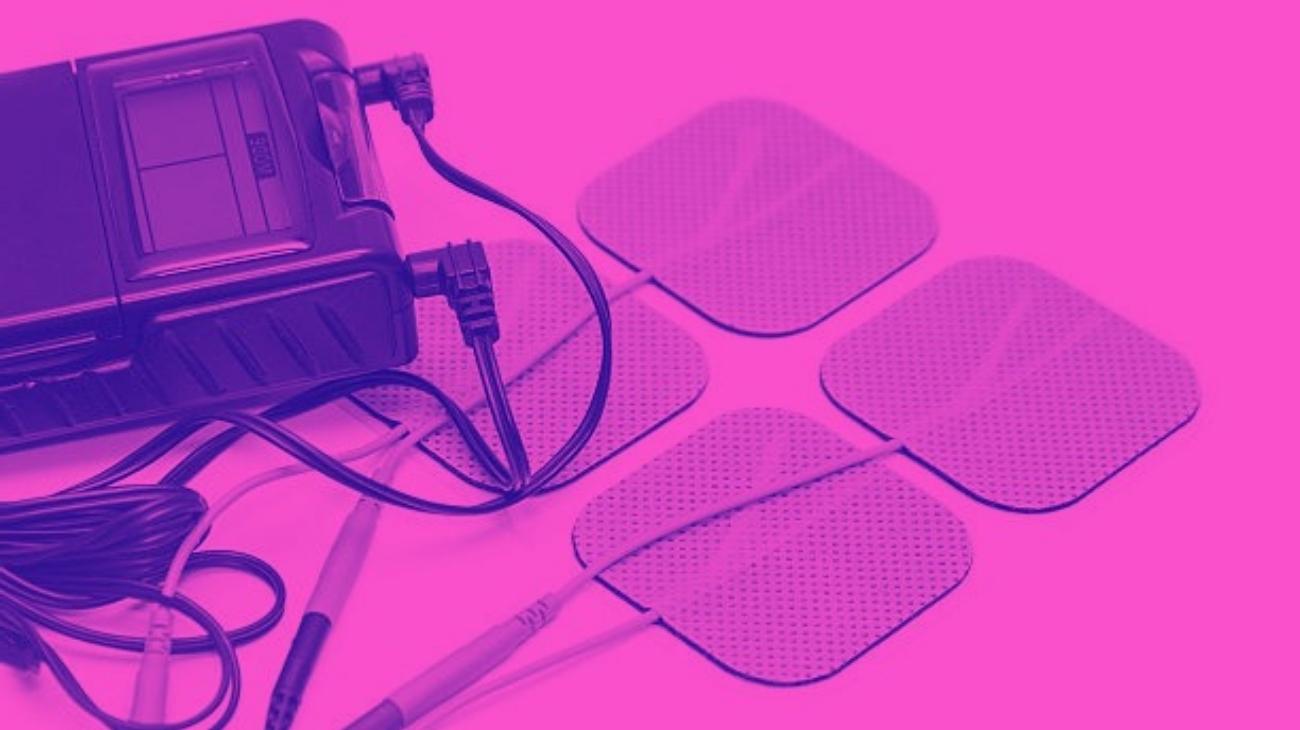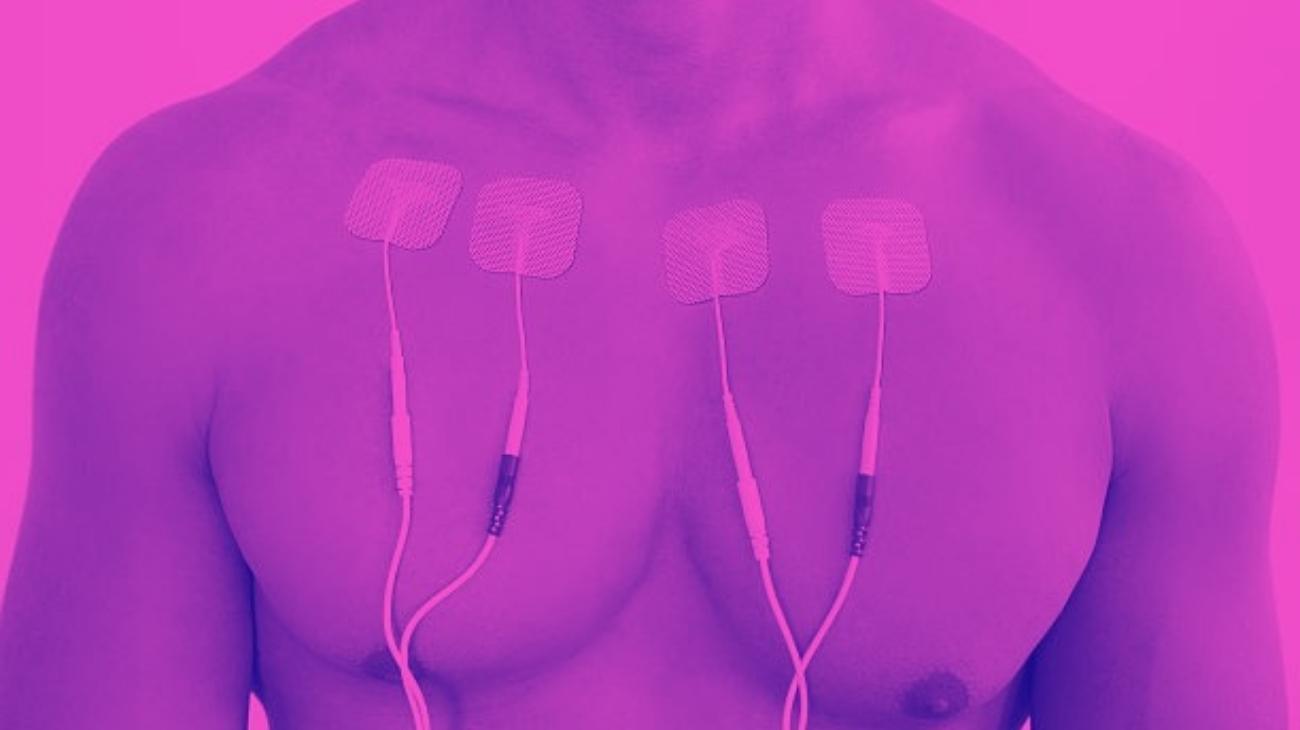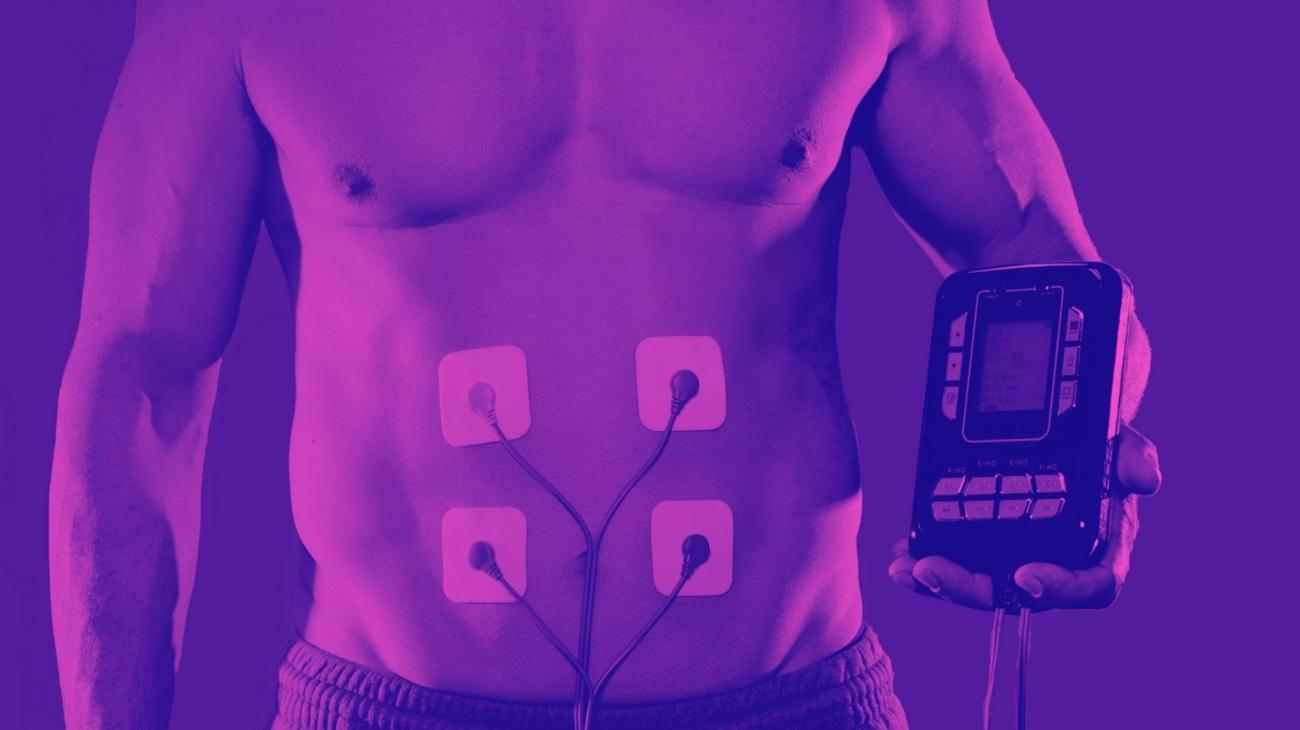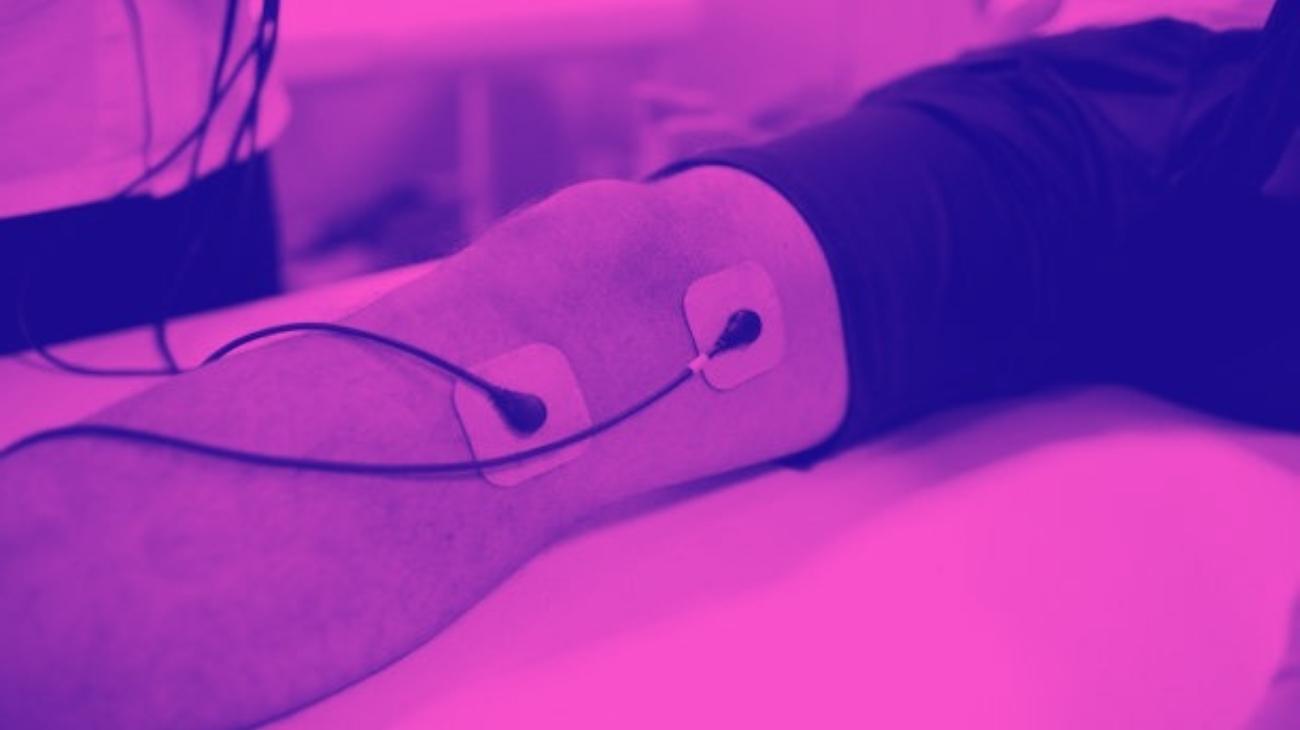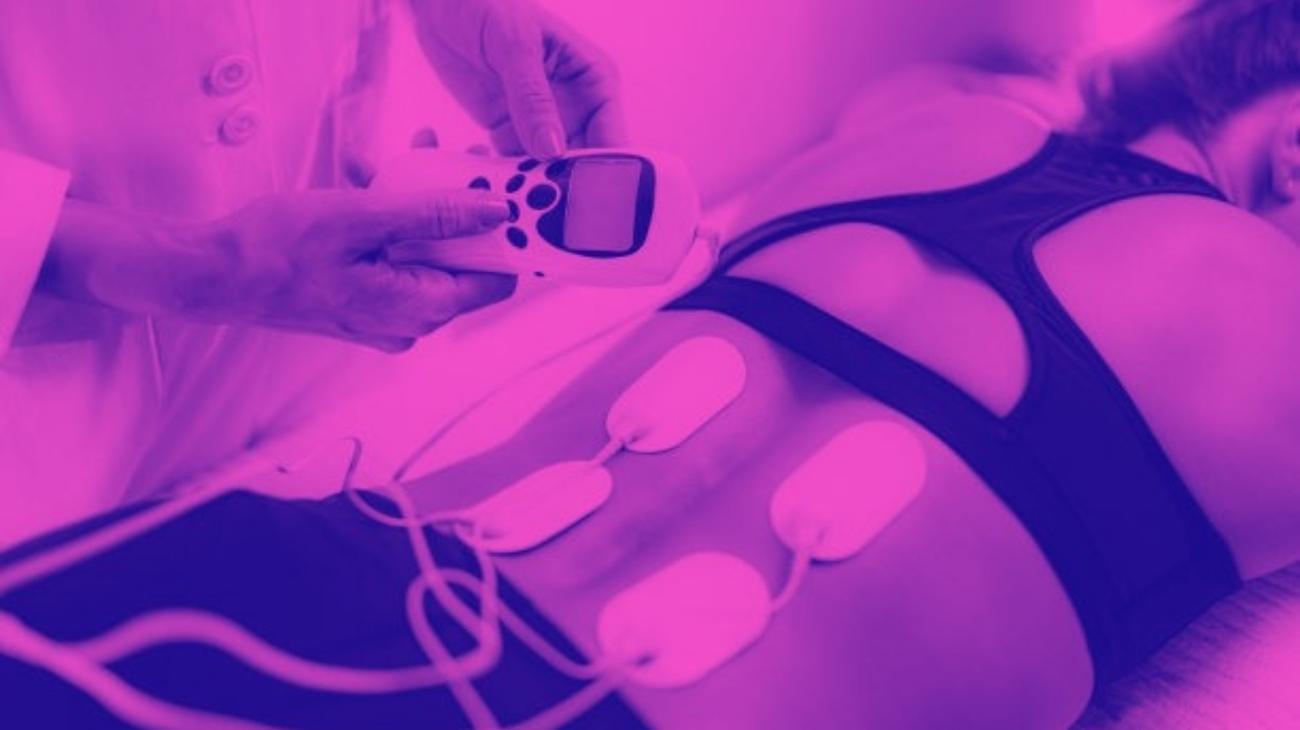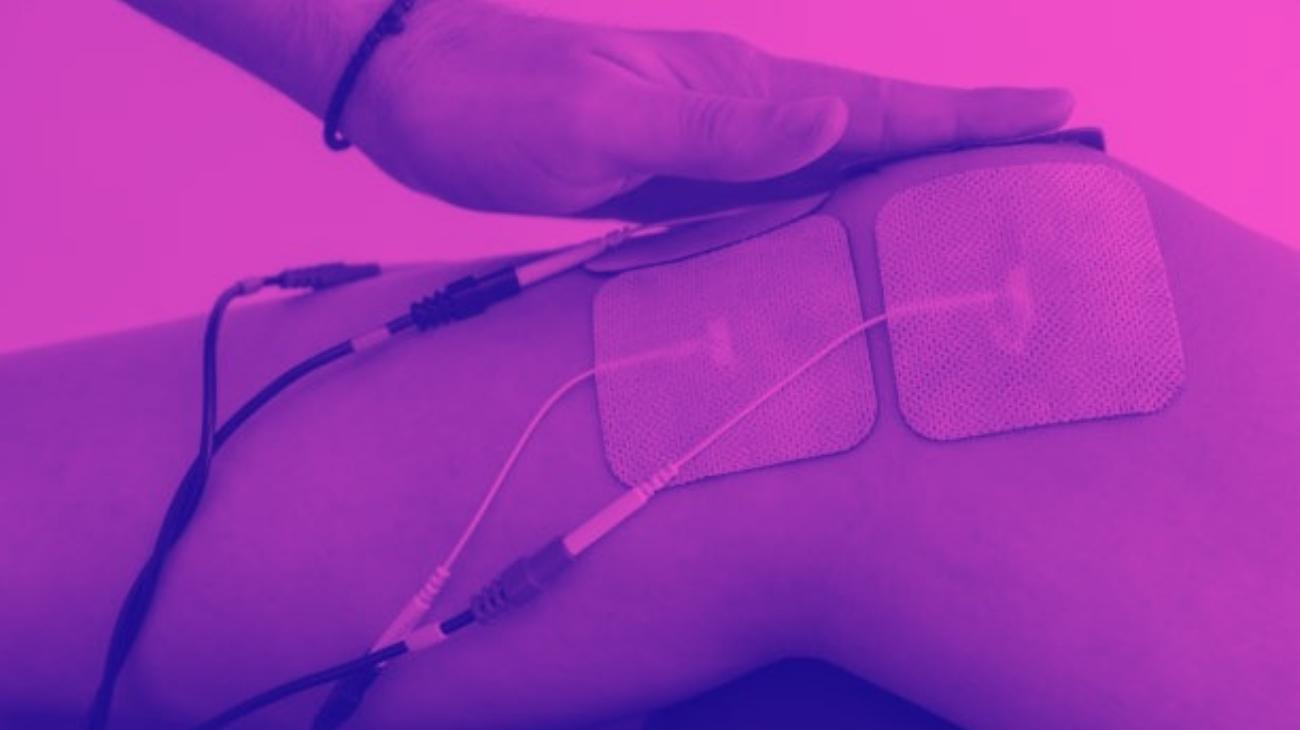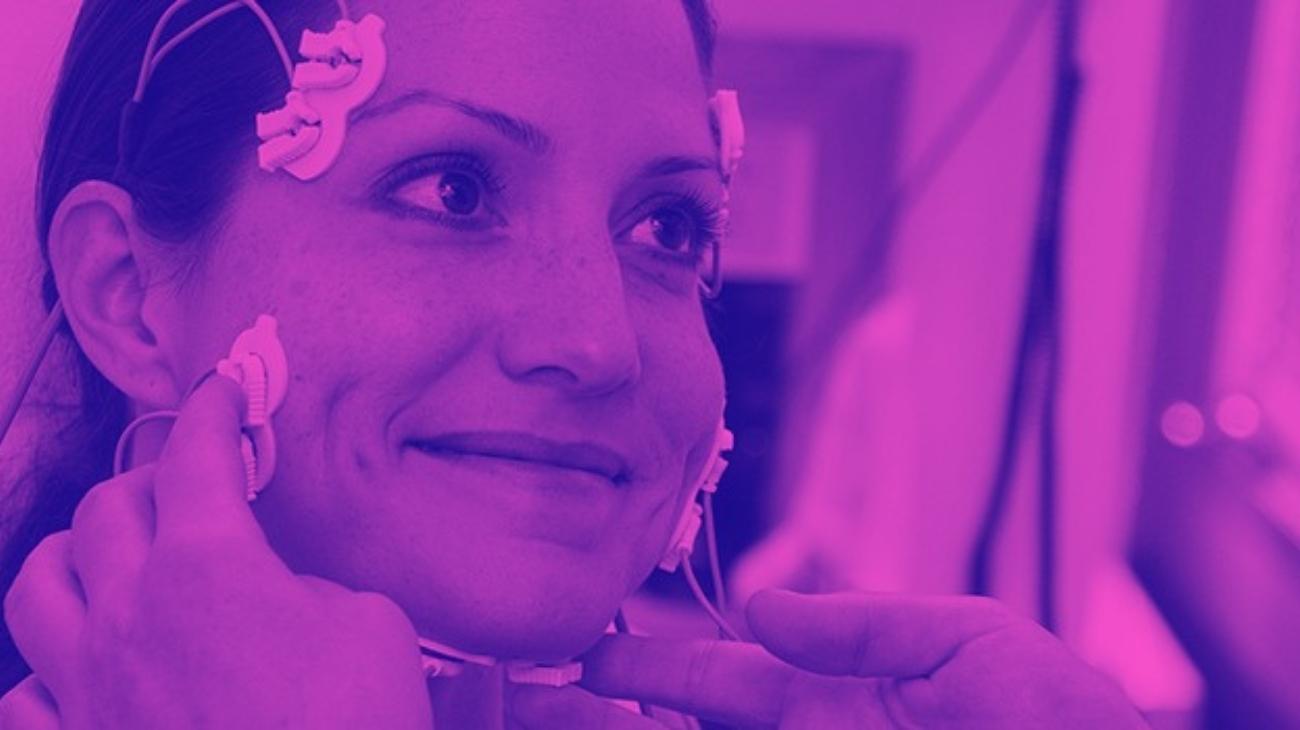- How to use TENS machines to relieve shoulder tendon injury pain?
- Best TENS units to treat rotator cuff tears
- How to use EMS to strengthen muscles and prevent a shoulder injury?
- Best EMS machines to prevent shoulder tendon tears
- Video: How to place the electrodes pads on the shoulder?
- More types of EMS stimulators and TENS machines you should know about
- What is a rotator cuff tear and what are the causes?
- What are the most common types of shoulder injuries?
- Differences between TENS and EMS: Which is better for treating rotator cuff tears?
- Contraindications in the use of electrodes and electrotherapy
The shoulder joint is one of the main responsible for the mobility of the arm, being the rotator cuffs responsible for keeping the joint stable within its range of motion, so certain movements can put excessive stress on this group of muscles and tendons.
TENS and EMS electrostimulation therapies are among the most commonly used options for the treatment of general pain so, below, we will show you how to apply these therapies to the shoulder and rotator cuff area, in order to treat ailments caused by injuries to this muscle.
How to use TENS machines to relieve shoulder tendon injury pain?
The practical use of TENS units requires some knowledge of anatomy in order to position the electrodes on the correct areas as well as knowledge of how each device works, which is why we will teach you the correct position to treat rotator cuff injuries, and what current to program into your TENS device for optimal treatment.
Where to place the electrodes?
The positioning of the electrodes follows a fairly simple process, and it is necessary that most of the pads are located over the branches of the suprascapular nerve and other nerve branches, which means that the ideal positions are as follows:
- Over the boundary between the trapezius and deltoid muscle, where the supraclavicular nerve is located.
- Along the anterior, lateral and posterior deltoids, in order to interact with the circumflex nerve.
- On the posterior aspect of the trapezius, on the upper part of the scapula, where it will act on the suprascapular nerve.
Which current to use?
A rotator cuff tear is an injury that can produce considerable pain that becomes more intense at night. This type of injury produces acute pain, so the ideal frequency for treatment is between 90 and 120 Hz. On the other hand, chronic pain caused by more severe muscle injuries requires a lower intensity, which can range from 2 to 10 Hz.
Muscle tears rarely become chronic pain, as their average healing time is 8 to 10 days for minor injuries, while moderate injuries can take four to six weeks.
Best TENS units to treat rotator cuff tears
The use of TENS electrotherapy devices is dedicated both to the treatment of pain caused by sports injuries and to the relief of symptoms of chronic ailments and diseases. In the particular case of rotator cuff pain treatment, the best devices you can choose are the following:
- Type: TENS
- Channels: Not specified
- Modes/Programs: Not specified
- Intensity: Not specified
- Wireless: Yes
- Heat Therapy: No
- Battery: Rechargeable Lithium (300mAh)
- Electrodes: 4 Pads
- Display: Digital
- Size: Not specified
- Reduces pain symptoms
- Includes user manual
- Improves joint mobility
- Portable device
- Improves blood circulation
- Does not include carrying bag
- Does not specify channels and modes/programmes
- Does not specify intensity levels
One of its best features is the presence of a laser line for the nose that will allow you to treat rhinitis symptoms effectively, improving your health conditions considerably. The dual channel function of this rechargeable mini TENS machine allows you to treat multiple parts of the body simultaneously, bringing benefits such as improved circulation, reduced pain and accelerated metabolism.
- Type: TENS
- Channels: -
- Modes/Programs: 5 Modes
- Intensity: 7 Levels
- Wireless: Yes
- Heat Therapy: No
- Battery: Rechargeable lithium (up to 24 hours)
- Electrodes: 4 Pads
- Display: No display
- Size: 13,5cm x 7,4cm
- Long battery life (up to 24 hours)
- Portable and small size
- User manual included
- Wireless electrodes
- Reduces pain symptoms
- No display included
- Not suitable for muscle hypertrophy
- Does not specify weight
It has 7 intensity levels and 5 massage modes for instant pain relief in a natural and completely drug-free way. Its rechargeable lithium battery provides 24 hours of continuous use on a single charge, and can be charged via its USB connectors. Undoubtedly a complete revolution in the massage experience that you can keep in your pocket and take anywhere thanks to its small size.
- Type: TENS
- Channels: Dual
- Modes/Programs: 5 Programs
- Intensity: 15 Levels
- Wireless: Yes
- Heat therapy: No
- Battery: 4 AAA Batteries
- Electrodes: 4 Pads
- Display: Digital
- Size: Not specified
- Includes user manual
- Reduces pain symptoms
- Improves joint mobility
- Portable and small size
- Good quality
- Does not specify measurements and weight
- No carrying bag included
- Few types of programmes
The therapeutic device can be used by two users at the same time or by one user to relieve two locations. Treatment intensity is guaranteed at all times. It has 5 treatment modes (massage, acupuncture, tapping, scraping and cupping) to choose from to relieve headache, leg pain, shoulder pain, joint pain, stomach pain, hip pain and leg pain. Automatic treatment interruption, alarm if the electrode falls off.
- Type: TENS
- Channels: Dual
- Modes/Programs: 30 Programs
- Intensity: 99 Levels
- Wireless: Yes
- Heat Therapy: No
- Battery: Rechargeable Lithium (up to 12 hours)
- Electrodes: 16 Pads
- Display: Digital
- Size: 839 gr
- Reduces pain symptoms
- Includes carrying bag
- Includes user manual
- Rechargeable battery
- Accelerates recovery from sports injuries
- Does not specify measurements
- Not suitable for muscle hypertrophy
- Does not include touch screen
This electrostimulation unit is completely digital for an effective and reliable treatment. It has an LCD display and a user-friendly system that allows you to set the functions in seconds. In addition, the purchase includes 16 reusable electrodes of high quality and for all budgets.
- Type: Combo
- Channels: Dual
- Modes/Programs: 8 Programs
- Intensity: 60 Levels
- Wireless: Yes
- Heat Therapy: No
- Battery: 2 AA Batteries
- Electrodes: 4 Pads
- Display: Digital
- Size: 120 x 60 x 20 mm - 75 gr
- Includes user manual
- Portable and small size
- TENS+EMS Combo
- Improves blood circulation
- Prevents muscle atrophy
- Few types of programmes
- No battery life specified
- No heat therapy
It has 6 programs specifically designed for various muscle groups of different sizes, as well as 2 customizable programs to suit your needs. It has functions specifically focused on user safety, so it has an open circuit detector, which means that if an electrode is detached from the skin, the current intensity will be set to 0 to avoid risky electric shocks.
How to use EMS to strengthen muscles and prevent a shoulder injury?
Despite the fact that the main purpose of EMS therapy is not the treatment of injury symptoms, its use is widely spread in sports such as swimming, boxing and weightlifting, as it is quite an effective method of training shoulder muscles.
Where to put the electrodes?
To improve the results of physical training, it is necessary to know how to position the electrodes on the right muscles in order to increase the strength and endurance of the shoulders, both to improve their aesthetics and to increase their endurance and performance.
The ideal muscle zones to position the electrodes are as follows:
- Trapezius muscle, at the junction between shoulder and neck.
- Posterior deltoid, located on the posterior aspect of the shoulder.
- Lateral deltoid, on the lateral aspect of the shoulder.
- Anterior deltoid, visible on the front of the joint.
In addition, there are other muscle groups adjacent to the shoulders, specifically over the scapula, that enable their movement and increase their stability, so they should be taken into account for comprehensive shoulder training. These are:
- Infraspinatus muscle, in the center of the scapula.
- Greater teres major muscle, just below the infraspinatus muscle.
- Teresminor muscle, near the axilla.
- Latissimus dorsi, in the lower part of the scapula.
What intensity to use?
According to studies conducted by the Journal of Sport Science and Medicine, strength training by EMS becomes much more effective when currents greater than 50 Hz are applied, resulting in an optimal average of 85 Hz.
However, it has been shown that the use of currents between 20 and 30 Hz can provide very similar results when applied to small muscle groups such as the deltoid muscles.
Best EMS machines to prevent shoulder tendon tears
Strengthening the musculature of the shoulder joint is vital for stability and, consequently, prevention of shoulder injuries. Therefore, it is necessary to select the right devices in order to obtain the best possible results.
- Type: EMS
- Channels: 4
- Modes/Programs: Not specified
- Intensity: Not specified
- Wireless: No
- Heat Therapy: No
- Battery: Rechargeable
- Electrodes: 4 electrodes
- Display: Digital
- Size: 22 x 32 x 20 cm; 249gr
- Prevents muscle atrophy
- Improves joint mobility
- Improves blood circulation
- Portable and small size
- Includes user manual
- Not for pain relief
- No specified modes or programmes
- No intensity levels specified
The Compex Sport 4.0 has 10 conditioning programs, 5 recovery massage programs, 8 pain management programs, 2 rehabilitation programs and 5 fitness programs. All these features make it the perfect electrostimulator for athletes who practice their sport 3 to 4 times a week, for injury prevention and fast recovery from injuries.
Beurer - Digital dual channel TENS/EMS device with heat therapy, 70 programs and 50 intensity levels
- Type: Combo
- Channels: Dual
- Modes/Programs: 70 Programs
- Intensity: 50 Levels
- Wireless: Yes
- Heat Therapy: Yes
- Battery: Rechargeable Lithium
- Electrodes: 4 Pads
- Display: Digital
- Size: Not specified
- With heat therapy
- Incl. user manual
- TENS+EMS combo
- Accelerates recovery from sports injuries
- Reduces pain symptoms
- No battery life specified
- Transport bag not included
- Does not specify dimensions and weight
This powerful electrostimulation equipment offers immediate relief for almost any type of ailment using stimulation methods that stimulate the production of natural pain relieving agents within the body. It also works as an effective methods to accelerate muscle growth and regeneration, while combining with heat therapy to provide one of the most complete treatments you will find.
- Type: Combo
- Channels: 2
- Modes/Programs: 24 Modes
- Intensity: Not specified
- Wireless: No
- Heat Therapy: No
- Battery: Rechargeable Lithium (up to 20 hours)
- Electrodes: 6 electrodes
- Display: LCD
- Size: Not specified
- Includes user manual
- Reduces pain symptoms
- Long battery life (up to 20 hours)
- Portable and small size
- Good quality
- Few intensity levels
- Does not specify size and weight
- Not suitable for muscle hypertrophy
It includes 24 modes of use that apply different types of massages focused on dealing with particular ailments. Its lithium battery allows continuous use for more than 20 hours, and has a session timer that can be set from 10 to 60 minutes. The purchase includes 1 mini Plus 24 electro stimulator, 1 carrying case, 6 large electrodes, 2 guide cables, 1 user manual and 1 USB charger.
- Type: Combo
- Channels: -
- Modes/Programs: 24 Modes
- Intensity: 20 Levels
- Wireless: Yes
- Heat Therapy: No
- Battery: Rechargeable Lithium
- Electrodes: 3 Pads
- Display: No display
- Size: 16,5cm x 7,6cm - 21,8cm x 7,6cm
- Wireless electrodes
- Control from mobile application
- Prevents muscle atrophy
- Reduces pain symptoms
- TENS+EMS Combo
- No weight specified
- Battery life not specified
- Non-universal electrode replacements
It has a rechargeable lithium battery for convenience, and the mobile app allows you to schedule sessions of up to 60 minutes. Additionally, the box contains 2 butterfly electrodes of different sizes, one 6.5 inch and one 8.5 inch, which adapt spectacularly to any area of the body you want to work.
- Type: Combo
- Channels: Dual
- Modes/Programs: 55 Programs
- Intensity: Not specified
- Wireless: Yes
- Heat Therapy: No
- Battery: Rechargeable Lithium
- Electrodes: 4 Pads
- Display: Digital
- Size: 80 gr
- Portable and small size
- TENS+EMS combo
- Rechargeable battery
- Includes user manual
- Includes carrying bag
- No measurements specified
- Battery life not specified
- No intensity levels specified
It contains 28 preset programs and 8 manual programs that you can configure to suit your needs. This feature gives you fantastic coverage for natural pain relief of all kinds, and it has a powerful memory function that saves the last massage program that was used, so you can access it immediately.
Video: How to place the electrodes pads on the shoulder?
Electrodes for shoulder
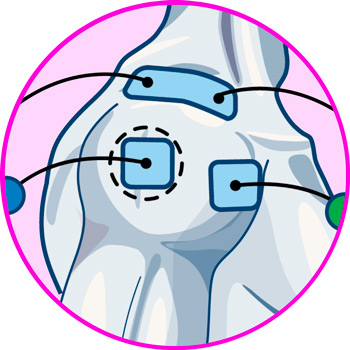
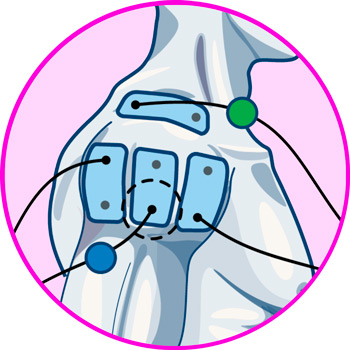

More types of EMS stimulators and TENS machines you should know about
What is a rotator cuff tear and what are the causes?
Rotator cuff tears occur when the muscles and tendons that make up this section of the shoulder become overloaded, causing excessive strain or a tear in the muscle fibers, causing severe pain and making it impossible to move the shoulder.
This injury can occur for several reasons, among which we can highlight the following:
- Falls: a fall on the outstretched arm can strain the shoulder enough to tear the rotator cuff tendons
- Overuse: A sudden jerk while trying to lift something heavy can cause injury to the shoulder muscles
- Age: Starting at age 40, the rotator cuff muscles and tendons wear out, making them more vulnerable to injury.
- Conditions: Problems such as chronic tendonitis or impingement syndrome can increase the likelihood of rotator cuff injury.
What are the most common types of shoulder injuries?
Although the shoulder joint is one of the most mobile joints in the body, its structure makes it somewhat unstable, so the upper part of the humerus must be anchored to the shoulder socket by the muscles tendons and ligaments that make up the rotator cuff.
Because of this intrinsic instability, the shoulder can suffer a variety of injuries, among which we can highlight:
- Dislocations: this injury is caused by the separation of the head of the humerus from the glenoid socket of the scapula, which occurs when stress is placed on the shoulder such that the joint between the bones gives way, and can occur as a result of sports injuries, falls and seizures.
- Sprains: is an overstretching of the coracohumeral, glenohumeral and trapezoid ligaments, causing partial or total tears that may result in symptoms such as pain, swelling, bruising and motor problems.
- Tendonitis: is the severe inflammation of the tendons, which can cause pain and swelling. In the shoulder joint, the tendon most vulnerable to this condition is the supraspinatus tendon.
- Bursitis: it is the inflammation of one or several of the bursae of the shoulder, which are serous bags that prevent the bones from colliding with each other. The shoulder contains three bursae. The subacromial bursa, subdeltoid bursa and subscapularis bursa. Bursitis can cause inflammation, pain and difficulty moving the shoulder.
- Fractures: is the general breakage of a bone in the joint. The shoulder is made up of three main bones of the shoulder are the humerus, scapula and clavicle. Fractures can cause severe pain, swelling, inability to move and, in the most severe cases, perforation of the skin.
- Arthritis: is inflammation of the joint that occurs naturally due to factors such as age, overweight or family history. It affects all joints and causes pain and stiffness in the joints.
- Rotator cuff tears: it is formed by the supraspinatus, infraspinatus, teres minor and subscapularis muscles. An excessive twisting or an impact with the arm stretched can cause tears in these muscles, generating inflammation, impaired mobility and acute pain.
Differences between TENS and EMS: Which is better for treating rotator cuff tears?
Electrotherapy is one of the most widely used physical rehabilitation methods today, thanks to its interaction with internal tissue. The most commonly used modalities are TENS and EMS therapies, and although both are based on electrical shocks, their modes of operation have crucial differences.
To begin with, TENS (Transcutaneous Electrical Nerve Stimulation) therapy has very distinctive characteristics, among which we can mention:
- It is a technique oriented to the treatment of pain caused by trauma, injuries or diseases that affect certain areas of the body.
- It makes use of electric discharges of variable frequency and low intensity.
- In the case of the shoulder, the discharges interact with the nociceptors located in the sensory branches of the suprascapular nerve.
- Their objective is to generate a sensation of prolonged relief in the patient.
On the other hand, we have the Electro Muscle Stimulation (EMS) therapy which is focused on physical training and rehabilitation from a different approach, which can be summarized in the following characteristics:
- Its high intensity electrical impulses generate muscle contractions.
- It promotes the growth of new muscle fibers, increasing their volume, strength and elasticity.
- Its use is most commonly seen in medical equipment for highly competitive sports.
- The contractions can be oriented to rehabilitation rather than training, functioning also as muscle massage machines.
The ideal therapy for the treatment of pain caused by rotator cuff injuries is TENS, since the intensity and frequency of its electrical discharges is in the range required to treat pain, while EMS can produce adverse results thanks to the high intensity of muscle contractions.
The use of EMS is not completely contraindicated for rotator cuffs, since although it is not ideal for pain treatment, it is very useful for injury recovery if used with the appropriate intensity and frequency settings, producing a relaxing muscle massage that promotes recovery.











